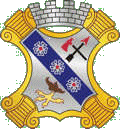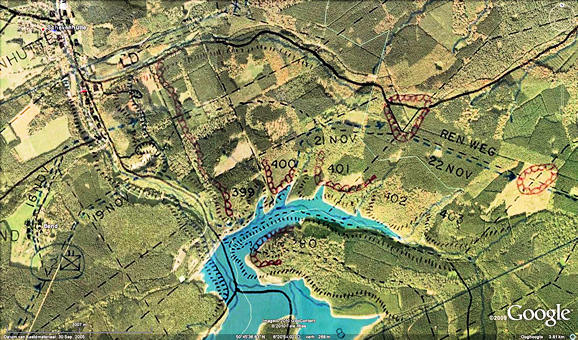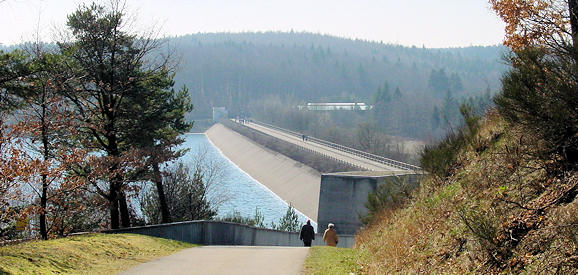(4TH INFANTRY DIVISION) IN THE HURTGEN FOREST,
GERMANY, 16-22 NOVEMBER 1944
(RHINELAND CAMPAIGN)
By Lieutenant Colonel James W. Haley

THE BATTALION PLAN OF ATTACK - 16 NOVEMBER
The 2nd Battalion's plan of attack was to move from the forward assembly area to the line of departure in a column of companies in the order of E, F, and G Companies. The line of departure was to be the front line positions of the 2nd Battalion, 47th Infantry. At this point the Battalion was to deploy and attack with E and F Companies abreast with E Company on the right. G Company was to be in battalion reserve and was to follow the attack by bounds on order and protect the left flank of the Battalion. The zone of attack of the Battalion was to extend from the road running east from Schevenhütte southeast to the large rock quarry. (See Map D) The Battalion Command Group was to follow the advance of F Company as the attack moved forward. Initially, the Battalion Commander would control the attack from the Battalion Observation Post on the east slope of the ravine. H-hour was to be 1245 16 November.

Haley's Map D superimposed on top of Google Earth's satellite image.
Please take notice that the Wehebach Dam was built in 1981.

Wehebach Dam
One platoon of heavy machine guns from H Company was to be attached to each of the assault companies. These platoons were to follow closely behind E and F Companies as there were no positions from which they could fire in support of the attack.
The 81 mm Mortar Platoon of H Company was to support the attack from positions in the vicinity of Bend. This platoon was to fire a fifteen minute preparation beginning at H minus fifteen minutes. These preparatory fires were to be placed along the fire break about 200 yards back from the top of the east slope of the ravine. The platoon was to lift this fire on call and then be prepared to fire in support of either E or F Company.
The 2nd Platoon of A Company, 70th Tank Battalion, was to be in battalion reserve in an assembly area in the vicinity of Bend since the only road by which the platoon could advance was blocked. There were no positions from which the tanks could support the attack by fire and it was very doubtful that they could move across country up the steep slope of the ravine.
The 2nd Platoon of A Company, 4th Engineer Battalion was assigned the mission of clearing the road running east from Schevenhütte along the left flank of the battalion zone. One rifle squad from G Company was to be attached to this platoon to furnish local security while the platoon was engaged in clearing the road. It was vital that this road be cleared as rapidly as possible since it was the only road in the battalion zone which could serve as a route of advance for supplies and ammunition.
The artillery, which was to begin its preparation at H minus one hour, was to shift its fire at H minus fifteen minutes to the same fire break along which the 81 mm mortars were to fire. This area was to be blasted with battalion concentrations in the hope that this fire would soften up the enemy defenses and pave the way for the assault of E and F Companies.
It was realized that control in dense woods would be very difficult. The communication plan included both radio and wire lines which were to bo supplemented by runners. It was doubtful that the radios would be very effective because of the rough terrain and thick woods. A Battalion Wire Team was to accompany the advance of F Company laying a wire line as the attack progressed. The Battalion Command Group was to move forward along this wire line and tap into the line to contact F Company in the event radio contact was broken. It was hoped that contact with E Company could be made through F Company by means of the wire line if radio contact with E Company also failed. Messengers were to be used in the event both radio and wire communications failed.
The administrative plans for the attack ware made in great detail. It was known that if the engineers did not succeed in opening the road running east from Schevenhütte that all supplies would have to be hand carried until such time as this road was opened. In order to prepare for this possibility the Battalion Ammunition Supply Point was to be established well forward, The Battalion Medical Section was to establish a forward collecting point in a house in the southern edge of Schevenhütte and was to be prepared to evacuate casualties back to this collecting point by litter teams. Evacuation from this collecting point back to the aid station located in Bend was to be by vehicle. The Battalion Ammunition and Pioneer Platoon was alerted to be prepared to assist in the hand carry of ammunition and supplies and the evacuation of the wounded. (See Map D) 31
By night fall on 15 November all plans had been completed and all orders issued. Every man in the Battalion from the commanding officer to the last private realized that they faced an extremely difficult task on the following day. However, spirits were high and the morale of the troops was excellent. The possibility that within a few days they would be out of the cold, wet and depressing forest brought some little comfort to the men. Little did they know how long it was to be before this possibility was to materialize.

